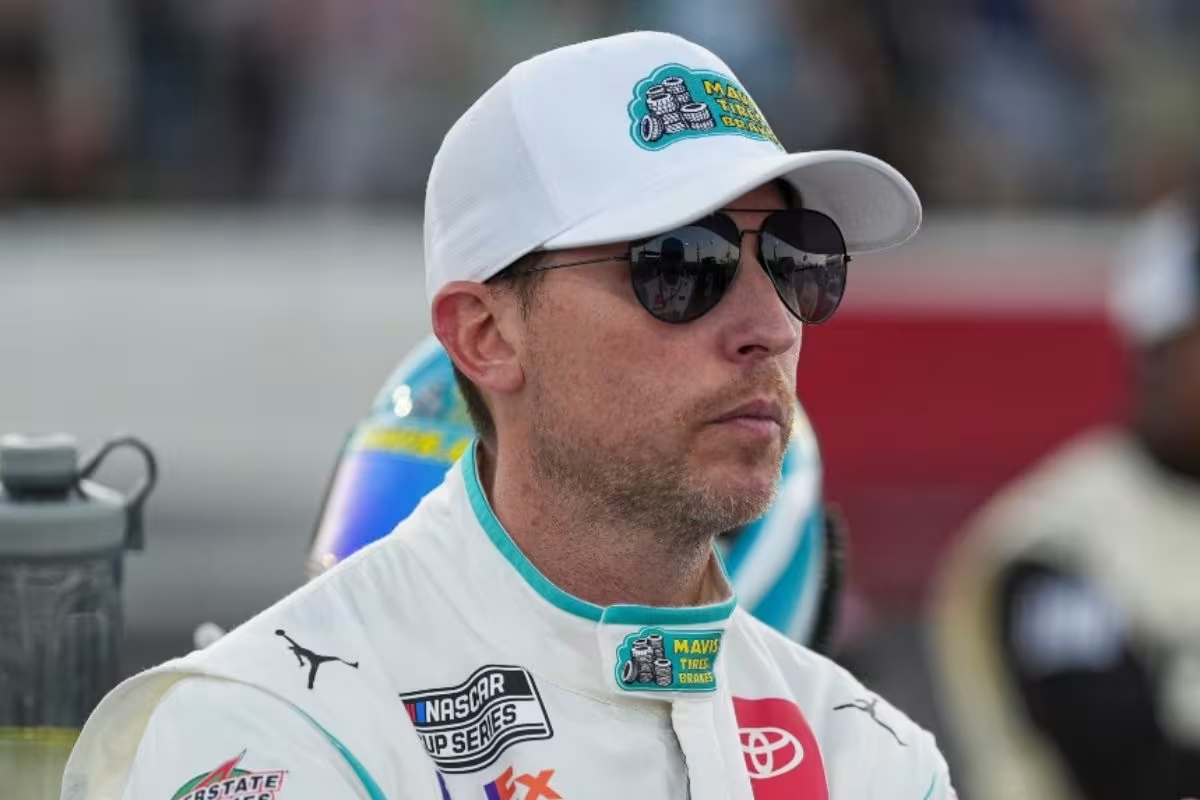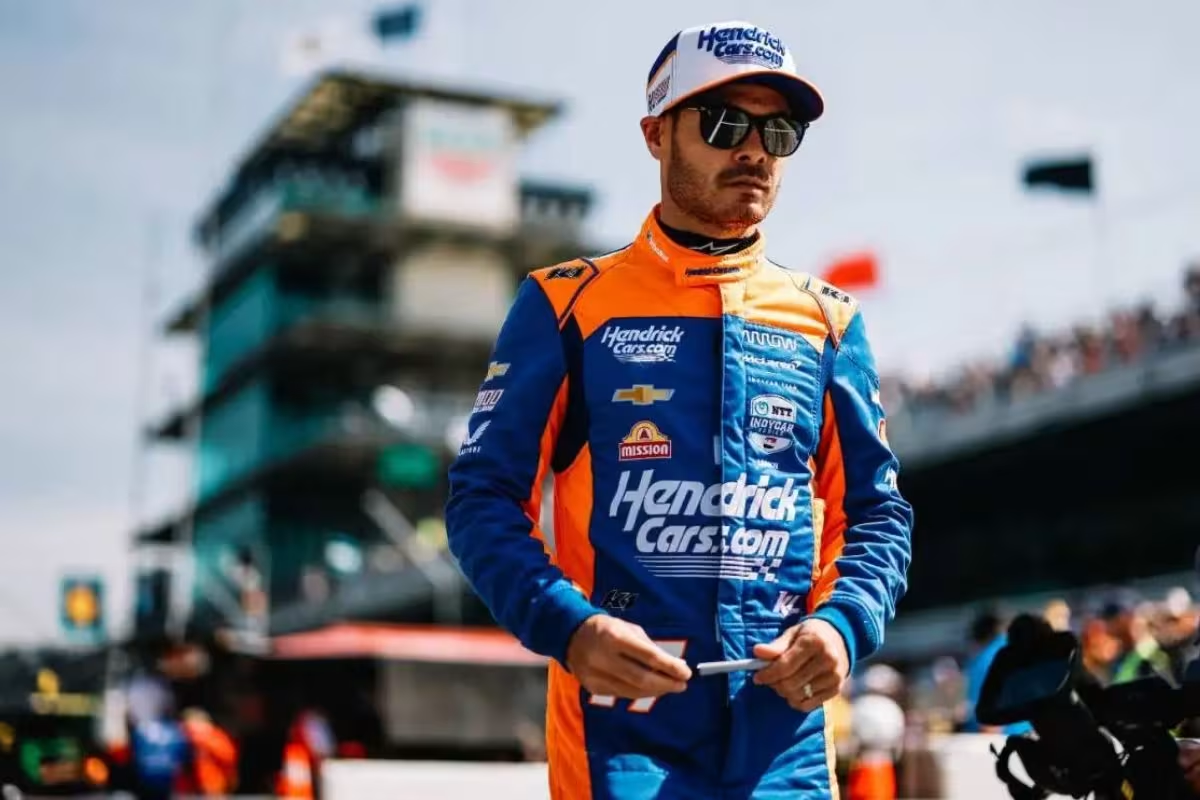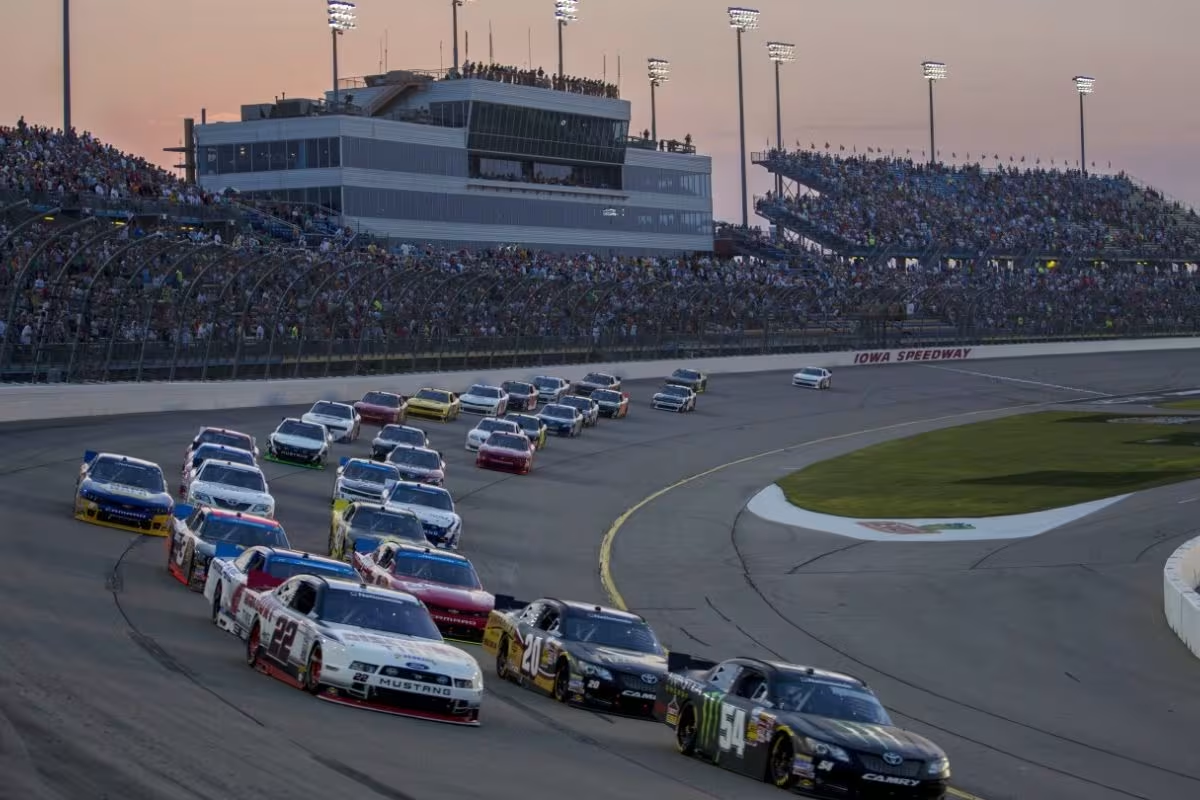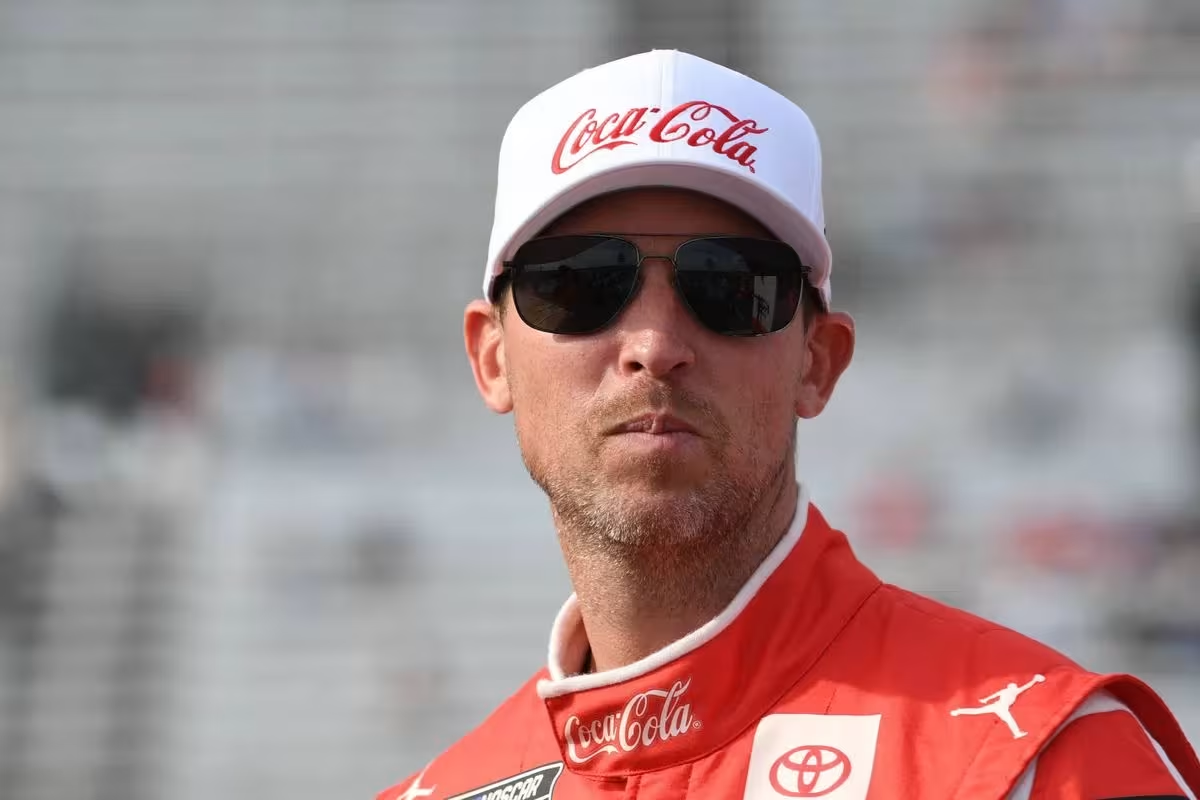NASCAR Drivers in Danger of Pay Cuts: NASCAR drivers might face pay cuts, as Denny Hamlin pointed out serious revenue shortfalls impacting team budgets and performance. Many teams rely heavily on sponsorship deals, which adds to the financial instability since resources are declining. The current charter system also has unfair revenue distribution, making things even tougher for drivers and hurting team morale. This financial strain makes it hard to keep competitive teams, especially with costs reaching over $18 million a year for just one car.
Key Highlights
- Denny Hamlin emphasizes the urgent need for systemic changes in NASCAR’s financial framework due to significant revenue shortfalls.
- Declining revenues are threatening driver salaries and overall team budgets, leading to potential pay cuts.
- The reliance on sponsorship deals creates financial instability, impacting team performance and morale.
- Lawsuits by teams highlight inequities in revenue distribution, stressing the need for sustainable business models.
- Annual costs for a single-car Cup Series team exceed $18 million, making economic viability a pressing concern for drivers.
Kyle Larson’s Reaction to the Lawsuit
In recent talks about the financial challenges in NASCAR, Kyle Larson has shared an important viewpoint on the economic situation for drivers. He pointed out a worrying trend, saying, “We’re probably one of the sports where athlete salaries have gone down in the last couple of decades.” This comment ties into the recent antitrust lawsuit filed by 23XI Racing and Front Row Motorsports against NASCAR, which aims to address unfair revenue distribution.
Larson’s statement highlights a key issue: the financial health of drivers as important players in the sport. The lawsuit shows a growing frustration among teams and drivers who want to discuss the current charter system and its effects on their earnings.
Hendrick Motorsports, one of the 13 teams that signed the new charter deal with NASCAR, is at the heart of this ongoing discussion. Larson’s comments point out a gap between NASCAR’s financial systems and the economic realities drivers face.
The conversations sparked by the lawsuit not only underline salary stagnation but also suggest possible changes in how NASCAR operates. With drivers like Larson speaking out, there’s a growing understanding that sustainable revenue models are crucial for keeping competition fair.
The results of this dialogue could significantly affect drivers’ future earnings and the overall health of the sport. It’s clear that financial structures need to be adjusted to better serve both drivers and team owners.
Denny Hamlin’s Perspective on Financial Constraints
While Kyle Larson has voiced concerns over declining driver salaries, Denny Hamlin echoes similar sentiments, emphasizing the urgent need for systemic change within NASCAR’s financial framework.
As a co-owner of 23XI Racing, Hamlin possesses a unique point, allowing him to critically assess the economic viability of the sport. He foresees notable consequences if NASCAR fails to address the underlying financial issues that plague team operations.
The crux of the debate revolves around the charter system, designed to offer teams a share of the revenue generated by NASCAR. However, the existing structure has not translated into sustainable business models for many teams, which continue to rely heavily on sponsorship deals to cover operational costs.
This dependency on sponsorship creates instability, evidenced by the recent departures of teams like Stewart Haas Racing from the sport. Hamlin’s perspective highlights a fundamental dilemma: without a robust and fair revenue-sharing model, the financial landscape for drivers and teams will remain unstable.
He argues that if these financial constraints persist, the sport risks losing competitive integrity and attracting top talent. The implications of stagnant driver salaries and dwindling team resources could ultimately diminish NASCAR’s appeal in the broader sports market.
The Cost of Running a NASCAR Team
Operating a NASCAR team demands considerable financial investment, with estimates indicating that a single-car Cup Series team incurs annual costs upwards of $18 million. This figure encompasses a myriad of expenses, including vehicle construction, maintenance, logistics, and personnel salaries.
For teams like 23XI Racing, co-owned by Denny Hamlin, the financial stakes are even higher, as they currently manage two teams and plan to expand to three by 2025. The construction of a new race shop, AirSpeed, further exemplifies the noteworthy capital required for team operations and growth.
As teams navigate these financial landscapes, they face the constant threat of revenue shortfalls. The necessity to maintain competitive performance often results in escalating expenses, while the revenue distribution model within NASCAR poses its own challenges. Teams are wary of financial pitfalls, as depicted by the struggles of Stewart-Haas Racing, which encountered near bankruptcy amid unfavorable revenue conditions.
Driver salaries represent one of the largest expenditures for any NASCAR team. The prospect of economic downturns places these salaries at risk, compelling teams to evaluate cuts as a viable solution to mitigate losses.
As Hamlin articulated in a recent podcast, the health of the team greatly influences driver compensation; when teams thrive, they can afford to invest more in talent. Consequently, the financial health of NASCAR teams is not solely an internal issue but a critical factor that directly impacts driver livelihoods, making fiscal stewardship paramount in the current racing environment.
“I think that Kyle Larson’s right, William Bryron’s right, Michael McDowell’s right all those guys spoke a little bit about it when I asked this week, and why the drivers should care is because when the teams are healthy, we’re gonna pay more for their services.” – hamlin
Hamlin’s Critique of the Current Structure
The financial dynamics within NASCAR have come under examination, particularly as drivers and team members face declining salaries in the midst of a challenging revenue environment. Denny Hamlin’s critique of the current structure highlights a notable disparity in pay distribution within the sport. He argues that while vital team personnel, such as mechanics and crew chiefs, have experienced salary reductions, the financial burden does not appear to be evenly shared among all stakeholders.
“Team mechanics, their salaries have gone down; crew chiefs have gone down. Everyone in our sport has gone down, except for one party, and that’s the party that’s on the other end of this lawsuit. So everyone should care because the teams have shouldered the burden of our revenue going down and down over time. What happens is your drivers are your biggest ticket item. So you pay the drivers, which you can afford to pay them.” – Hamlin
Hamlin’s observations suggest a troubling trend where the revenue distribution model disproportionately affects those who are critical to the success of the teams. He points out three key issues:
- Declining Salaries: Many vital team members are witnessing a drop in compensation, which undermines morale and team unity.
- Revenue Accountability: The financial challenges are not uniformly distributed, with certain parties seemingly unaffected by the revenue shortfalls that the teams are enduring.
- Driver Compensation: As the most visible assets of a racing team, drivers remain the primary focus for financial allocation, limiting funds available for the broader team structure.
Hamlin’s remarks serve as a call for stakeholders within NASCAR to reassess the existing financial framework. A re-evaluation is necessary not only to guarantee the sustainability of teams but also to promote a competitive environment where all members are valued and fairly compensated.
Hamlin’s Strategy and Performance at Talladega
Denny Hamlin’s tactical approach during the chaotic race at Talladega exemplifies a calculated risk that ultimately preserved his championship aspirations. In a season marked by examination over his mid-pack strategy at Atlanta, where he faced backlash from prominent figures like Kyle Petty and Kevin Harvick, Hamlin illustrated a nuanced understanding of race dynamics at Talladega, where avoiding a catastrophic crash became paramount.
Despite sustaining damage to his #11 Toyota Camry during a tumultuous stage 2, Hamlin’s decision to pit in the final stage initially left him at a disadvantage, stranded half a lap behind the leading pack of Fords and Chevys. This momentary setback, however, proved fortuitous as he successfully navigated the tumult of the race’s climactic moments, particularly dodging the infamous “Big One,” a multi-car pileup involving 28 competitors.
Hamlin’s ability to adapt under pressure reflected a calculated mindset focused not only on race performance but also on championship survival. With a top-10 finish secured, his team now finds itself 30 points above the cutline, enhancing their position heading into the decisive Charlotte Roval.
In a post-race interview, Hamlin acknowledged the value of a top-10 finish and emphasized the necessity for a solid performance in the upcoming race. As both a driver and team owner, his adept navigation of chaos highlights a commitment to sustaining championship hopes during an unpredictable season.
“If you would’ve asked me about a top 10 before (the race), I would’ve taken it just because of how this round is. But either way, we need to go to the Roval and have a solid effort.” – Hamlin
News in Brief: NASCAR Drivers in Danger of Pay Cuts
Recent comments by Denny Hamlin about revenue shortfalls suggest that the financial situation in NASCAR is becoming more unstable for drivers. The possibility of pay cuts raises serious concerns about how teams can continue to operate, especially with the rising costs of running a NASCAR team. Hamlin’s critique highlights the need for structural reforms within the organization to tackle these financial issues.
ALSO READ: Denny Hamlin Caught in NASCAR Monopoly Battle—His Loyalty in Doubt?




